Explore 20+ AI Solution Prototypes at Our AI Demo Central |
Derive Meaningful Insight from Your Visual Data
There are distinct reasons why computer vision technologies are being adopted by businesses. The two primary reasons are reducing human errors in analyzing visual data and saving time by faster processing large amounts of visual data. Now, these two reasons apply to various domains, including manufacturing, healthcare, automotive, energy, oil, and gas industries.
At ThirdEye Data, we have built over 25 computer vision applications and successfully implemented them in real-world use cases. These computer vision solutions are adopted by some of the Fortune 500 companies from various industries.
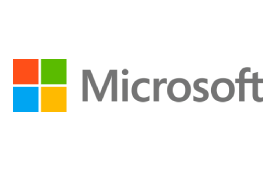
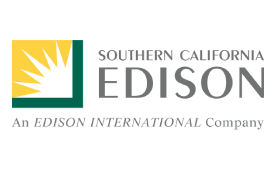

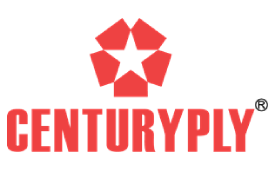
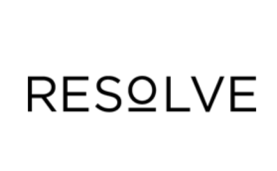
Object detection is one of the primary segments of computer vision solutions that focuses on identifying and locating objects within the ingested images or videos. It can distinguish different object types within the frame with the help of Convolutional Neural Networks or CNNs. As CNNs process the image, the model learns to identify patterns and shapes that correspond to specific objects.
This segment is used in applications like retail product identification, product quality checking, asset inspection, safety protocol monitoring, self-driving cars, and security surveillance.

In image classification, the entire image is classified into a single category based on its content. The algorithm identifies and extracts key characteristics from the training data. Like object detection, CNNs are trained on labeled images for classification. Post-training, the model learns to recognize the patterns and relationships between features that distinguish different categories.
This segment of computer vision solutions is often used for tasks like image organization, content moderation, and medical and satellite image analysis.
This segment of computer vision solutions goes one step further than object detection. It assigns a specific category to every single pixel in the frame and creates a pixel-wise breakdown of the image. We use deep learning algorithms, like Fully Convolutional Networks (FCNs).
The applications of image segmentation include medical image analysis like segmenting tumors from the diagnostic report, obstacle identification for self-driving cars by segmenting pedestrians & roads, and self-learning navigational features of autonomous robots.
This specialized segment of computer vision services focuses on identifying and verifying individuals based on facial features like eyes, nose, and mouth to create a unique "facial signature" for each person. We use deep learning architectures specifically designed for facial recognition.
Facial recognition technology is used in social media platforms, law enforcement, and security applications.
This segment of computer vision solutions analyzes sequential visual data like video footage to identify and classify actions, taking place in the frame. Recurrent Neural Networks (RNNs) are used for action recognition due to their ability to process sequential data and capture temporal dependencies between frames.
It is primarily used in detecting suspicious activity in surveillance footage and commentary of games.
Image captioning solutions automatically generate a textual description of an image. It analyzes the content and creates captions summarizing the scene or objects in the frame. This segment of computer solutions uses deep learning models, like CNNs that combine with natural language processing or NLP techniques.
This segment is getting popular for enhancing image search functionalities, building smart retail solutions, and developing applications for visually impaired users.
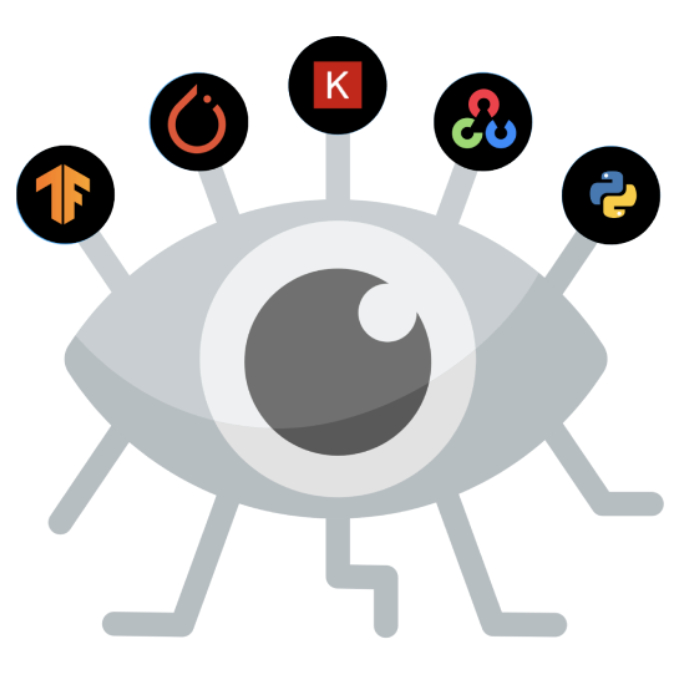
Data Acquisition: Cameras, Smartphones, Drones, Sensors
Data Annotation or Labelling: Labelbox, VGG Image Annotator or VGG IA
Deep Learning Frameworks: TensorFlow, PyTorch, Keras
Neural Networks: Convolutional Neural Networks or CNNs, Recurrent Neural Networks or RNNs, Fully Convolutional Networks or FCNs
Pre-trained Models: VGG, ResNet
Cloud Platforms: Microsoft Azure, Google Cloud Platform or GCP, Amazon Web Services or AWS
Visualization: TensorBoard, Neptune
Containers: Docker, Kubernetes
APIs: OpenCV
Python, R
Computer vision is a field of artificial intelligence that enables computers to extract meaningful information from visual data like images and videos. It is the simplest explanation of computer vision. In another way, computer vision imitates the human vision system just like artificial intelligence imitates human cognitive skills.
Computer vision solutions allow computers to see and make sense of the visual world as human brains do. By making sense, we mean computers can understand the context of the visual data, flawlessly identify and classify them, and derive insight from them. A properly trained computer vision model can perfectly analyze any situation and not miss the factors often overlooked by human eyes.
Computer vision techniques rely on machine learning, mainly deeplearningand convolutional neural networks (CNNs). These algorithms are trained on large amountsof visual data to accurately recognize patterns and features.
This is a specialized type of deep neural network that is particularly well-suited for image analysis. CNNs exploit the spatial relationships between pixels in an image, making them highly effective in recognizing patterns and features.
Deep learning is a subset of machine learning, which uses artificial neural networks with multiple layers. Each layer learns to extract higher-level features from the previouslayer by training, progressively building a complex understanding of the image.
With the advancement of technologies, computer vision services cover a wide range of applications across various industries. There are multiple segments that individually or together fuel real-world applications:
With extensive experience in developing computer vision solutions for different industries, here are some primary use cases we came across:
– Manufacturing Industry:Product defect detection, inventory management, predictive maintenance of machines
– Retail Industry:Self-checkout systems, customer traffic analysis, product identification, On-shelf product availability
– Healthcare Industry:Medical image analysis, patient monitoring, surgical assistance, drug discovery
– Transportation:Self-driving car navigation, traffic management, anomaly detection in public transportation, route optimization
– Security and Surveillance:Facial recognition, intrusion detection, crowd monitoring, access control
– Agriculture:Crop health monitoring, yield prediction
– Media and Entertainment:Image and video editing, special effects, content moderation
– IT (Information Technology):Document processing, advanced search engine, cybersecurity
– Gaming: Augmented reality gaming environment, character animation, gesture recognition, gaming voice-over or commentary
– Fitness: Real-time exercise analysis, tracking and providing real-time feedback on posture, alignment, and movement quality, personalized training programs
– Energy, Oil and Gas Industry: Leak detection, safety protocol analysis, asset inspection and maintenance
At ThirdEye, we have developed computer vision solutions for more than 20 enterprises. Some of the top names on the list are Microsoft, Southern California Edison, CenturyPly, Resolve, and Biloba Architecture.
We have been developing computer vision solutions for 15 years. As time progresses, we have gained hands-on expertisecombining our knowledge of machine learning, NLP, and generative AI technologies to build custom computer vision solutions for specific business needs.
The accuracy of computer vision solutions varies on the specific task, quality of training data, and chosen algorithms. The average accuracy rate of our computer vision solutions is 93% or higher.
The cost to build a computer vision solution depends on multiple factors like project complexity, desired functionality, and the chosen development approach. As per our project cost it varies from $10,000 to $1,50,000 depending on the functionality.
Yes, computer vision solutions often get integrated into existing systems through APIs. In our case, more than 70% of computer vision solutions are integrated into existing systems.
computer vision services, computer vision solution, computer vision solutions, computer vision systems, computer vision platform, vision ai
Computer vision is a transformative technology that enables machines to interpret and understand visual information from the world. By employing advanced algorithms and deep learning techniques, computer vision systems can analyze images and videos, extracting meaningful insights for various applications across industries.
This technology is increasingly vital in sectors such as healthcare, manufacturing, and security, where it enhances operational efficiency and decision-making. For instance, in healthcare, computer vision assists in diagnosing diseases through medical imaging, while in manufacturing, it helps in automating quality control processes.
The field of computer vision is rapidly evolving, with emerging trends that promise to enhance its capabilities and applications. Innovations such as real-time image processing, improved algorithms for object detection, and the integration of AI and machine learning are setting the stage for more sophisticated solutions.
Additionally, advancements in hardware, such as powerful GPUs and specialized processors, are enabling more complex computations, allowing for real-time applications in areas like autonomous vehicles and augmented reality. As these trends continue to develop, businesses can expect even greater efficiencies and capabilities from computer vision technologies.
Despite its potential, implementing computer vision solutions comes with several challenges. Organizations often face issues related to data quality, model accuracy, and integration with existing systems. Ensuring that the training data is diverse and representative is crucial for achieving reliable outcomes.
Moreover, the complexity of deploying these systems can lead to significant resource investment in terms of time and finances. Companies must also navigate regulatory compliance and ethical considerations, particularly in sensitive fields like facial recognition and surveillance.
Custom computer vision applications provide tailored solutions that meet specific business needs, offering significant advantages over off-the-shelf software. By developing bespoke applications, organizations can optimize performance for their unique operational challenges, ensuring higher accuracy and efficiency.
For example, a custom application might be designed to recognize specific defects in manufacturing processes, leading to improved quality control and reduced waste. This level of customization allows businesses to leverage their data effectively, driving innovation and competitive advantage in their respective markets.